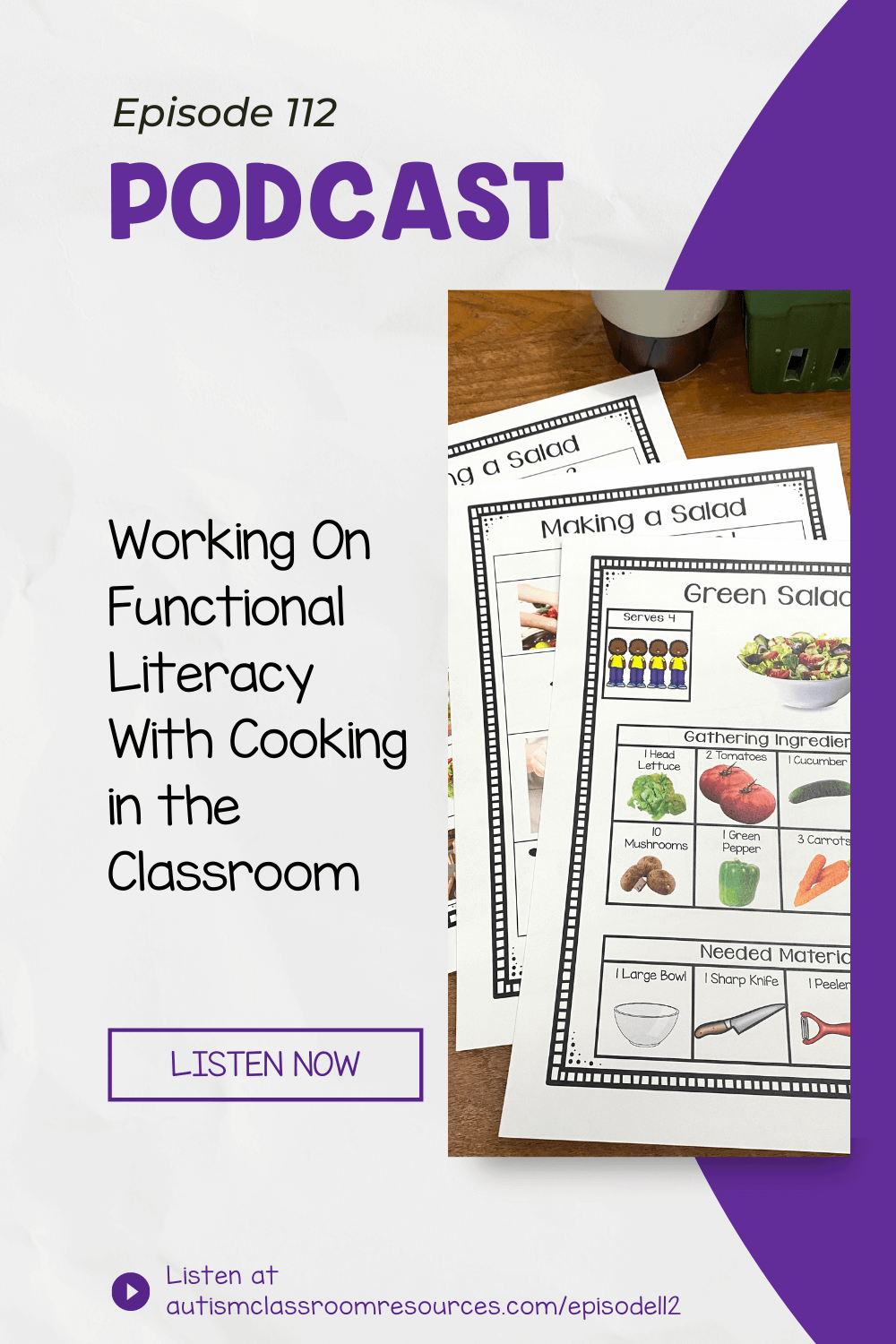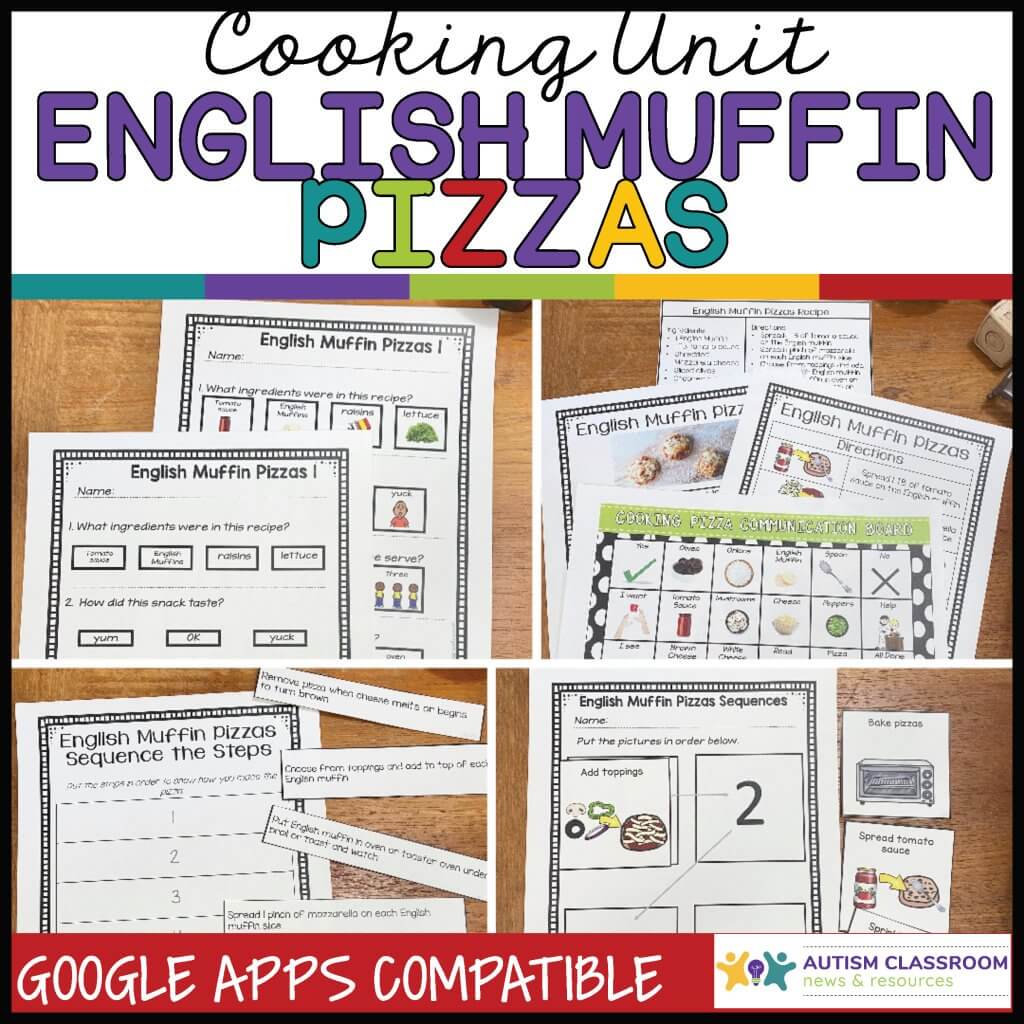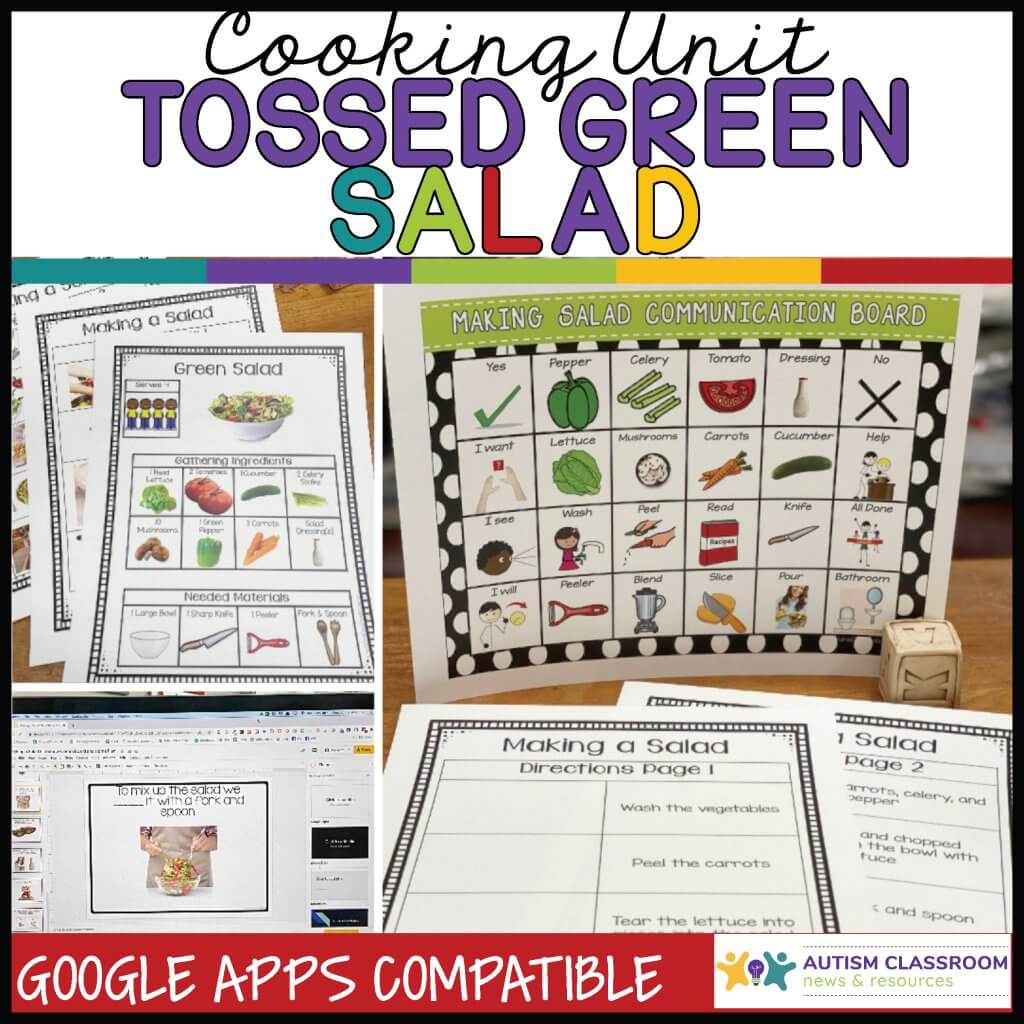Welcome to the Autism Classroom Resources Podcast, the podcast for special educators who are looking for personal and professional development.
Christine Reeve: I’m your host, Dr. Christine Reeve. For more than 20 years, I’ve worn lots of hats in special education but my real love is helping special educators like you. This podcast will give you tips and ways to implement research-based practices in a practical way in your classroom to make your job easier and more effective.
Welcome back to the Autism Classroom Resources Podcast. I’m Christine Reeve and I’m your host. If you’ve never listened to this show, then you might not know how much I love life skills and functional skills. I want to make sure that when we are teaching our students, we are getting the most out of every moment. That means that we are typically combining our academics with our life skills. Because let’s face it, at some point in most of our school days, each one of us has said about something a teacher gave us, “But when am I going to use this?” Sorry, I just had to whine when I said that. Calculus. I’m looking at you. Yep, we may have understood that there were things that we had to learn to get to the next stage of learning but when you had a teacher who helped you understand that geometry was more about figuring out how much paint you needed to paint a room than solving for X, it really helped it make sense, didn’t it? That’s why I love squeezing academics for our students into activities that they think are fun and functional rather than math and reading. Cooking is an excellent example of this because cooking offers us a ton of opportunities to practice so many different kinds of skills.
In today’s episode, I’m going to talk about some of the learning readiness skills, math, reading, and functional literacy, communication skills and even social skills that you can teach, and generalize with cooking. Before you say that you can’t do cooking in your classroom, let me just put these two thoughts out there. First, many of these same strategies could be done with an art or craft activity. I’m just a better cook than I am an artist, so it comes easier this way for me. Second, if you’re thinking about COVID or health restrictions, you can do almost all these things with recipes that help your students, allow your students to use only their own materials and foods. In fact, I have recipes set up so that you can do all of these things with the whole class or just have each student do their own. There are some advantages to doing them that way as well.
I have recipes and tools already put together that I’m going to pull examples from as I’m talking in today’s episode. They’re available in my TpT store. I’ll put the links to them in the show notes and in the blog post at autismclassroomresources.com/episode112. However, you don’t have to use these. You can create similar tools based on what I’m talking about. These are just already put together for you and already assembled. With all of that in mind, let’s get started.
First up, our learning readiness skills. Learning readiness skills are learning to learn skills. They are the building blocks we base all of our other learning upon. Now, let me preface this by saying that when I do cooking in a classroom, everybody cooks. No one watches. Everyone has a job. If we do it as a class, they may be assigned individual jobs. If each one has to get their own ingredients to cook with health protocols, with allergies that might be the case, then everybody does every job, maybe with the exception of knife work in some cases. Even students who are still learning to follow directions are going to be actively engaged. It drives me crazy to watch adults cook and kids watch in a cooking class. Sorry, I had to get that out.
Learning readiness skills do not mean that those kids watch or those students watch and other people cook. It means that the skills that they’re working on are following directions, finding the ingredients when you ask them, say to get the tomatoes, getting the silverware, getting the plates. It might mean imitating the student next to them; when it involves stirring what’s in their bowl, do what he’s doing. It’s those basic skills that we’re working on in the classroom, following the direction, imitating a peer, imitating an adult. All of those things are skills that they need to learn from the world around them. They’re all very important skills that they’re working on, we’re just working on them in cooking.
Math skills. There are so many levels of math skills that you can teach with cooking. First, we can work on just basic counting. We could work just on number identification in the recipe card, “What is this number? What is this number? Two, four, one-fourth.” You could work on fractions. “I need three tomatoes for this recipe. Count out three tomatoes,” so we can work on one to one correspondence and basic counting. “We need 25 mushrooms. I don’t know if we need 25 mushrooms but it says we need a cup,” so he’s working and counting, and I wanted something below just three, so I made up 25, then we’ll put them in a cup and see if we have enough. “How many place settings do we need to eat after the recipe is made?” “Okay, well, then we need five forks, five knives, and five spoons.” He has to count that many times. There are lots of opportunities to practice for that. Again, we can do number identification, we can do fraction identification.
Then we have measuring, measuring dry ingredients. I’ve got a video that I’ll actually link to in the blog post that is an independent work task for practicing measuring dry ingredients with rice, so the students can even have practice between cooking activities. There’s measuring wet ingredients, which is a whole different ball game and where they have to actually measure the water or measure the milk. That’s a different measuring cup. It’s a different skill. Then we get into measuring things like cream cheese and peanut butter, which is a whole different animal because it doesn’t measure out. It doesn’t work the same way.
Along those same kinds of things, there’s measuring and counting teaspoons, and tablespoons. Both of those are good ones. Again, identifying the fractions. “We need one-half of a teaspoon but I can’t find the half teaspoon. What could I use instead? Oh, I could use two-quarter teaspoons.” You can work on equivalent fractions that way. You could also bring in a food scale and have them weigh their ingredients. So many recipes these days, at least the ones I find on the internet for baking, have the ingredients in grams because many bakers weigh their ingredients. If a student is having difficulty measuring cups, then this might be a good solution, is to get a digital food scale and use that because then he just has to read the number on the scale.
Next, you’ve got adjusting recipes. If your students are well past those basic skills, have them double or triple the recipe. If they can do that, have them half the recipe, so they have to divide everything. Then sometimes, they get into again, having to figure out, “How do I multiply fractions? How do I divide fractions?” That becomes a more complex question.
Another thing you can do is have them take a poll of having everybody in the class predict whether they’re going to like the final product of the food, then have them graph those answers, then have them poll everyone afterwards and graph that answer, then compare and contrast their data. They’re beginning to work on some data collection and some data interpretation. They can also create a number sentence from those graphs. They may need some visual support to do this but it’s a good extension activity, because remember that cooking, just like many of our activities, doesn’t have to be a one and done activity. We could read the recipe, sequence the ingredients, pull out the ingredients, half the recipe one day, then we could cook on one day, then we could review the recipe another day, then we could poll on another day. This could be a week-long activity. It doesn’t have to be a one-day thing. Remember that this doesn’t have to be just a one-day thing.
Our next skills are reading, functional literacy skills. There’s so much you can do with functional literacy skills with cooking. First, you’re reading the recipe with or without picture cues, depending on your recipe and the students’ needs. You can work on decoding unfamiliar words, comprehension by matching the words to the actual ingredients, following the directions in the recipe, so you’re working on that kind of comprehension, writing them down in a grocery list or list to get things from the pantry if you’re not actually able to go to the grocery store. They’re working on following simple visuals, words, or pictures, or verbal if you’re reading it to them, directions to construct a product. They can sequence the steps of the recipe once they’ve completed it, then they can retell how they did it. They can answer questions about it before and after. They can answer questions about the product and the activity itself.
You could also even have them write about it, write about what they did, write down the steps, and write it down as a journal entry, as a literacy activity. For language and communication, they might start by matching pictures to words in the recipe, so they’re working on learning new vocabulary expressively and receptively. They can request needed materials or ingredients. You can sabotage it. You can set up situations in which they’re missing needed ingredients or missing utensils, so they have to ask for assistance. They’re learning to retell the events of something that they’ve done and the steps that they’ve observed. They can describe what they’ve done, the experience that they had, how it tasted, what it felt like. They can describe their job. They can explain what they did to the class, describe what their role was in the group project. They can describe what the final product looks like. They could find items when they’re asked to find them by characteristics and things like that. You can expand it in a lot of different ways.
For social skills, finally, if they’re working in a group and they have an assigned role, they could collaborate with peers to complete that group project. They could take turns with materials or utensils as needed; whether they’re working on their own or with their peers. They could share with their peers about what they made during their cooking activity and what they thought about it after everyone’s done cooking. They could present their description of how theirs turned out, what they thought about it, what theirs looked like. If you were doing a poll to see what everyone thought, they could navigate being the poll taker or the poll respondent appropriately. There are so many skills, and I left a ton of them out, that you can address in cooking for functional academics that allow the students to get their hands on real-life material, and use their skills in a way that gives them a tangible product.
Again, you could do the same thing with a craft activity as well. But sometimes, cooking is such a reinforcing activity that it just really works well. I’ll put the links to my cooking activities in my store in the blog post if you want to have a look at them at autismclassroomresources.com/episode112. We have them as part of a cooking workshop in the Special Educator Academy. That’s actually where they started. It was part of that. In fact, we have a whole cooking planning tool as part of that workshop. If you’d like to check out the Cooking in the Classroom workshop along with tons of other resources that we have in the academy, come and get your seven-day free trial at specialeducatoracademy.com. I hope that you will come back next week when our topic will be all about independent work for our new month. Until then, have an amazing functional week.








